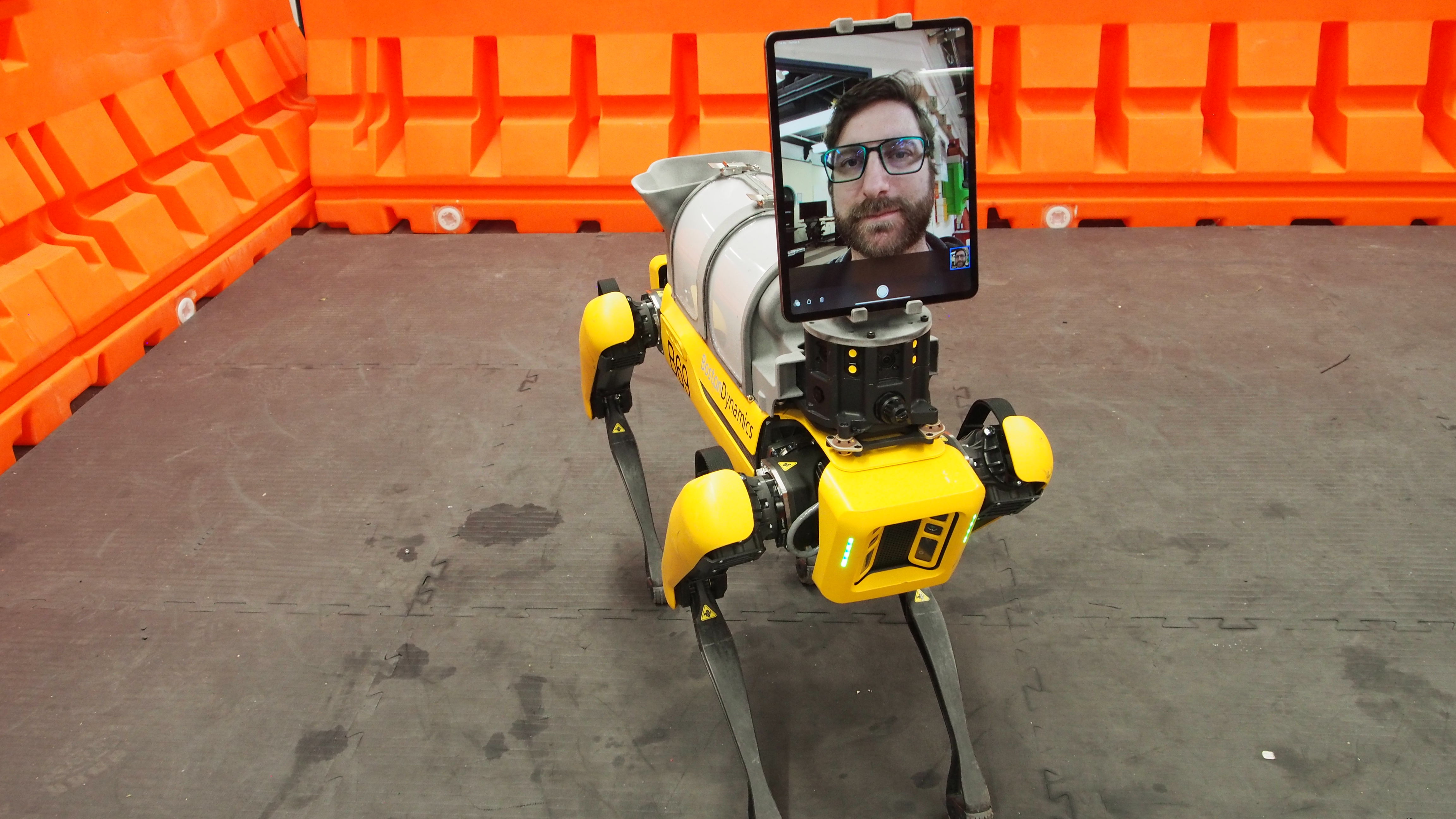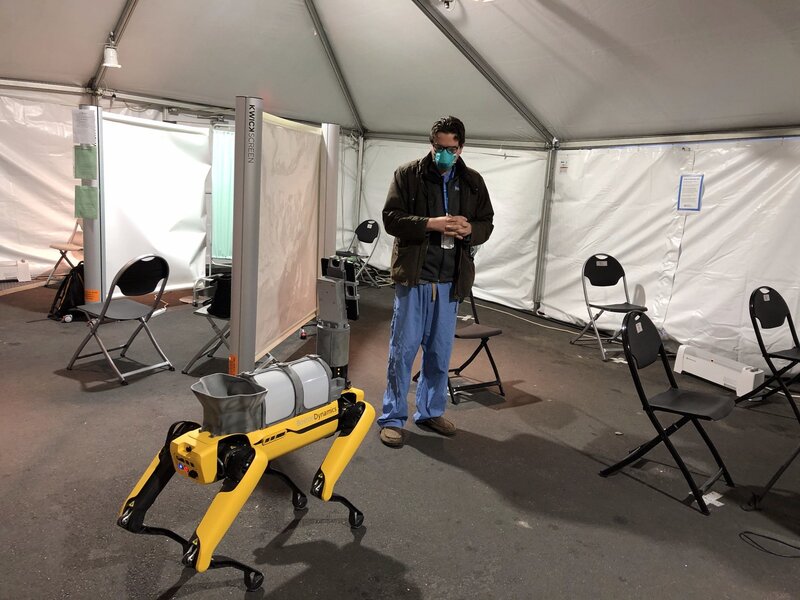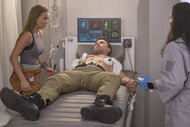Create a free profile to get unlimited access to exclusive videos, sweepstakes, and more!
Good boy! Boston Dynamics’ robot dog Spot helping healthcare workers battle coronavirus

If you’ve never seen Spot, Boston Dynamics’ canine-skewing agile mobile robot, then you might be a bit discomfited upon first meeting, seeing as the bot bears a striking resemblance to the killer robodogs in Black Mirror’s “Metalhead” episode. But as the robo-company has shown off more and more unique uses (from loading the dishwasher to working on offshore oil rigs), we’ve come to see how useful (perhaps even cute?) these little, complex critters can be. And never more so than in its latest capacity: on the front line, literally, assisting healthcare workers at Brigham and Women’s Hospital in Boston, Massachusetts.
With help from a two-way radio and an attached tablet allowing for video conferencing, Spot is reducing healthcare workers' exposure to COVID-19 by remotely triaging patients admitted to the hospital by utilizing a mobile telemedicine platform. While Boston Dynamics had to make hardware and software tweaks with regard to payload and application architecture for hospital work, such dangerous work conditions are pretty much what the robot was invented for in the first place.
“Mobile robots play a vital role in removing people from dangerous environments,” Michael Perry, vice president of business development at Boston Dynamics, tells SYFY WIRE. “Many wheeled and tracked robots have already been deployed inside hospitals to deliver meals or carry around a tablet and be used as a remote telemedicine platform. However, many hospitals have been triaging patients outside in lawns or parking lots, and in these environments, legged robots like Spot are able to maneuver more easily than traditional robotics.”
Patients in such circumstances are obviously faced with scary, confusing, and lonely conditions, but those at Brigham and Women's seem to have appreciated the link that Spot is able to provide.
"So far, Spot has been very popular with patients," Dr. Farah Z. Dadabhoy, a Harvard Affiliated Emergency Medicine Residency with many hands-on hours working with Spot at Brigham and Women's, tells SYFY WIRE. "In the context of the pandemic, our patients have been open-minded and eager to adapt to technologies that will help limit exposure for healthcare workers and conserve PPE. Spot's dog-like movements make it a welcome addition."
"It takes some practice to work with Spot — once you get facile with the controller it’s actually a pretty nice way to do the interview and some of the routine tasks you would do with patients, but be remote," adds Dr. Peter R. Chai, Division of Medical Toxicology and Department of Emergency Medicine at Brigham and Women’s Hospital. "Our clinicians and nurses like the concept of Spot, and then PAs that we have trained to use Spot also like using it — it obviously eliminates an exposure risk when used, and can eliminate the time needed to don and doff PPE."
This is really just the beginning of Spot’s future in medicine, too. Development on the robot’s payload, hardware, and software can be tweaked for all sorts of applications.
“We're continuing to build out the current telemedicine platform to enable remote vital monitoring,” Perry says. “Working with MIT, we've already deployed a solution to use the robot to collect body temperature, respiratory rate, pulse rate, and oxygen saturation to make the triage experience completely contact-free. In parallel, we're working with a number of groups to develop a disinfection solution that can be mounted on the robot.”
Furthermore, Boston Dynamics is open-sourcing the latest telemedicine-related hardware and software designs, hoping that developers and roboticists can rapidly deploy more robots to assist in the current health crisis.
While Spot’s hard work on the healthcare frontlines is certainly appreciated at a time like this, there are far-reaching applications for the robot in other fields as well (as you can dramatically see in Spot's launch video above).
“The beauty of this robotic platform is that it is adaptable,” Perry says. “Spot has been deployed in a few different industries where it keeps humans out of dangerous environments. In addition to this healthcare application, Spot can monitor radiation levels inside nuclear reactors, act as a surveyor before first responders on disaster sites, inspect hazardous packages, and monitor gas levels on oil rigs or in mines.”
And, all those important uses aside, let’s not forget the entertainment value: It can also perform admirably as an extra on Black Mirror.
















